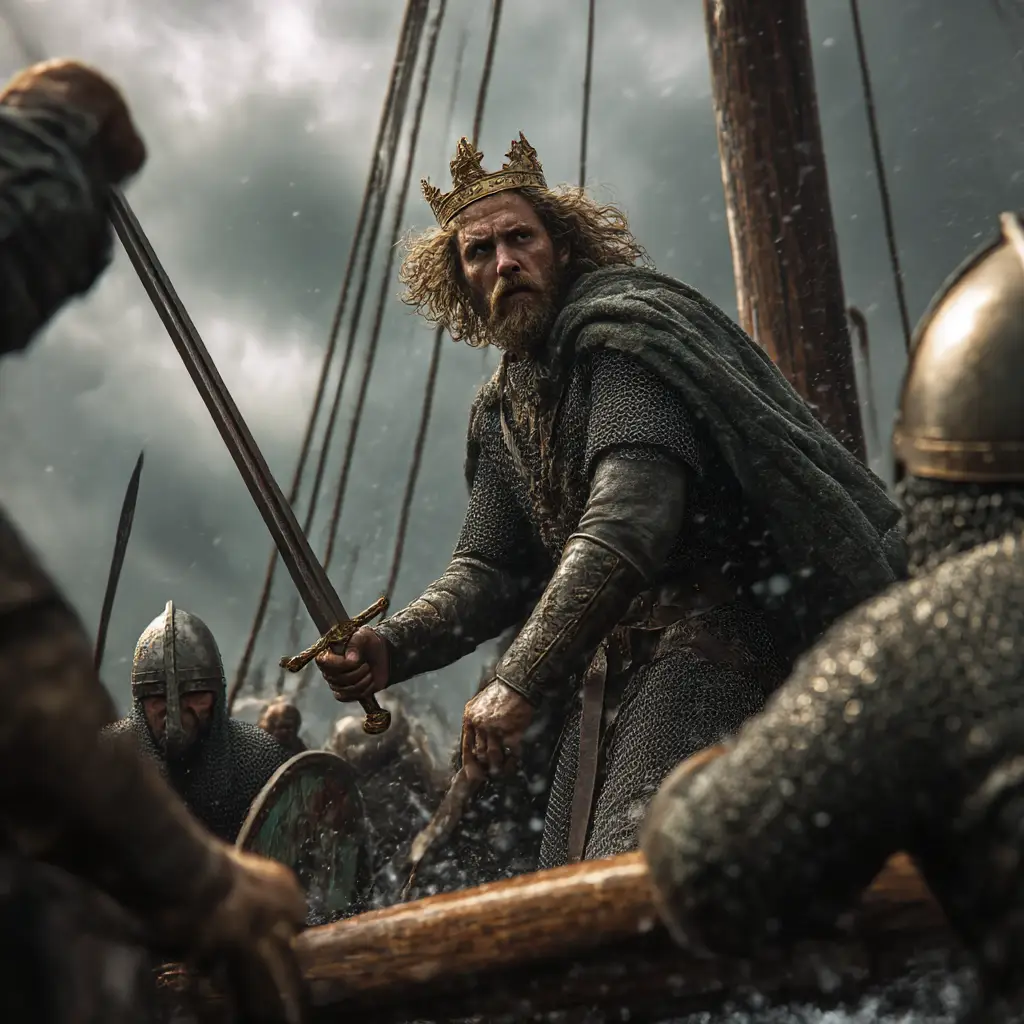The Battle of Nesjar and the Role of the Vikings
The Battle of Nesjar, fought on 25 March 1016, was a significant naval clash during the Viking Age, taking place off the coast of Norway near the Oslofjord. This battle played a crucial role in the unification of Norway and marked the rise of Olaf Haraldsson, later known as St Olaf, as a central figure in Norwegian history. It was also one of the last major Viking sea battles fought between rival Norse factions before the country moved toward a more centralised Christian monarchy.
Background to the Conflict
At the time, Norway was divided into various petty kingdoms, with competing jarls and chieftains vying for power. Following the death of Olaf Tryggvason at the Battle of Svolder in 1000, Norway had fallen under the influence of powerful earls such as Eirik Hákonarson and Sveinn Hákonarson, ruling under the authority of the Danish king Sweyn Forkbeard and later Cnut the Great.
Olaf Haraldsson, a descendant of Harald Fairhair and a veteran of Viking campaigns in England, returned to Norway around 1015 with ambitions to claim the throne. He quickly gained support among inland chieftains and Christian factions. However, his path to power was blocked by Earl Sveinn Hákonarson, who ruled parts of Trøndelag and northern Norway and opposed Olaf’s growing influence.
The Battle Unfolds
The two forces met off the coast near Nesjar, close to the mouth of the Oslofjord. It was a naval battle, fought between Viking longships manned by hardened warriors. Both sides were composed of experienced Norsemen, many of whom had fought in battles across the North Sea, in England, Denmark, and the Baltic.
Olaf’s fleet is thought to have been made up of ships from eastern and southern Norway, including contributions from the Viken region, whose leaders had backed his claim. Earl Sveinn brought a fleet of northern ships and may have had some backing from Swedish forces as well.
The battle was brutal and chaotic, as was typical of Viking sea warfare. Ships were lashed together, and combatants fought with swords, axes, and spears across the decks. Archers and missile throwers contributed to the intensity, but it was close-quarters fighting that ultimately decided the day. Olaf’s forces gained the upper hand, and Earl Sveinn was forced to flee. His defeat marked the end of organised resistance to Olaf’s rule in the south.
Viking Warfare in the Battle
The Battle of Nesjar showcased classic elements of Viking warfare:
- Naval Tactics: Ships were not only transport vessels but also floating battle platforms. Commanders used their placement and mobility strategically.
- Personal Combat and Honour: Viking warriors valued individual bravery and prowess. Battles such as Nesjar were often seen as a test of leadership and divine favour.
- Loyalty to Chieftains: The warriors involved were loyal not to a nation, but to leaders like Olaf or Sveinn, and fought based on allegiance to those figures.
Following the victory at Nesjar, Olaf Haraldsson consolidated his power and became king of most of Norway. His reign marked a turning point in the Christianisation of the country, as he introduced new laws and suppressed pagan practices. Despite future challenges to his rule, including his eventual death at the Battle of Stiklestad in 1030, Olaf’s legacy endured, and he was canonised as a saint.
For the Vikings, the Battle of Nesjar signified the end of an era. It was one of the last great battles fought between rival Norse earls using traditional Viking methods. As Norway became more centralised and Christianised, the old ways of Viking raiding and clan-based warfare began to fade, giving way to a more unified medieval kingdom.
The Battle of Nesjar stands as a crucial chapter in Norse history—where sea kings and Viking warriors shaped the destiny of a nation.



